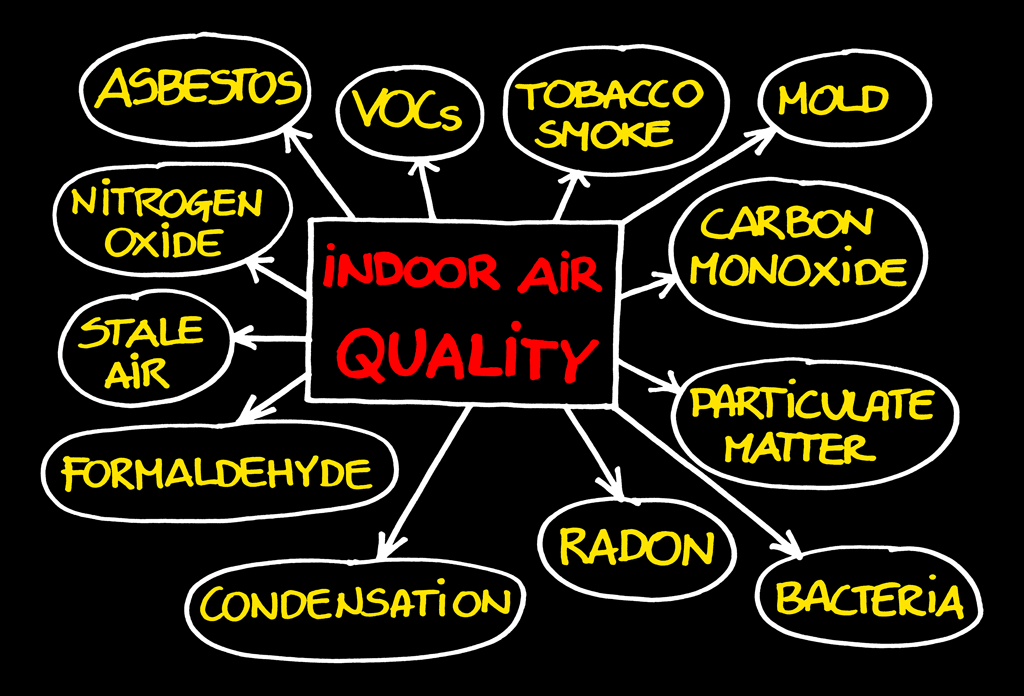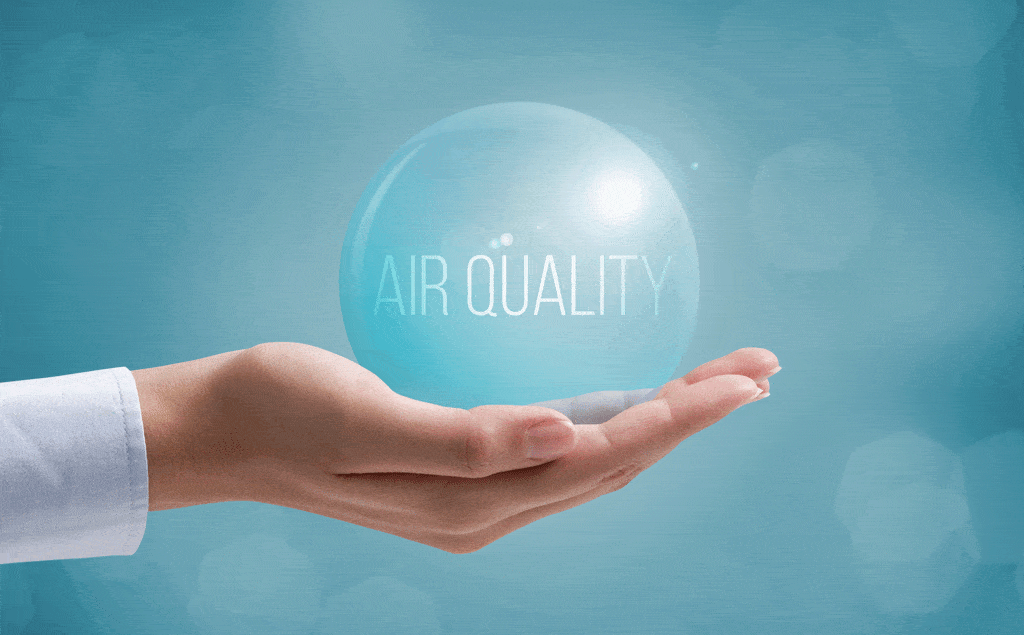
A Guide to Indoor Air Quality Testing in Your Home
Every breath you take inside your home matters.
The quality of the air you breathe plays a pivotal role in your overall well-being.
But have you ever paused to ponder about the purity of the air circulating within your living spaces?
It’s not just about comfort; it’s about health, safety, and the ambiance of your sanctuary.
In this article, we’ll delve deep into the intricacies of Indoor Air Quality Testing, its significance, and offer actionable insights to ensure you’re surrounded by the freshest air possible.
Understanding Indoor Air Quality Testing
What Exactly is Indoor Air Quality Testing?
Indoor Air Quality Testing (IAQ) is more than just a term; it’s a reflection of the air quality within and around buildings, homes, and other structures.
Imagine the countless breaths you take indoors, whether you’re at home, in the office, or any enclosed space. Each of those breaths is influenced by the quality of the air around you.
Now, Indoor Air Quality Testing isn’t just about the absence of pollutants or contaminants; it’s about creating an environment that promotes health, comfort, and well-being.
Poor Indoor Air Quality Testing doesn’t just stop at causing minor irritations like throat dryness or occasional sneezing.
It has been scientifically linked to a range of health issues. Some of these are immediate and noticeable, like allergies or asthma flare-ups. However, some effects are long-term and might not manifest until years later, such as respiratory diseases, heart diseases, or even cancer.
Furthermore, the quality of indoor air can be influenced by various factors. These include outdoor air pollution seeping indoors, the type of building materials used, household products, and even the behavior of the occupants.
For instance, smoking indoors can drastically reduce the quality of indoor air. Similarly, using certain cleaning agents without adequate ventilation can introduce harmful chemicals into the air.
In today’s world, where we spend a significant portion of our lives indoors, understanding and prioritizing Indoor Air Quality Testing becomes not just essential but imperative.
After all, it’s not just about breathing; it’s about breathing right and ensuring that every inhalation contributes positively to our health.
Why Should You Care About IAQ?
Indoor Air Quality Testing, often abbreviated as IAQ, is a topic that deserves more attention than it typically receives.
Think about it: the air inside your home, office, or any indoor space can be 2-5 times more polluted than the air outside.
This statistic is alarming, especially when you consider the myriad of pollutants that can be present indoors, from dust mites and mold spores to volatile organic compounds (VOCs) and other harmful chemicals.
Given our modern lifestyles, we find ourselves spending approximately 90% of our time indoors.
Whether we’re working, sleeping, cooking, or just relaxing, we’re constantly surrounded by indoor air. This makes the quality of this air not just a matter of comfort but of health and well-being.
Poor Indoor Air Quality Testing can lead to a host of health issues, ranging from minor irritations like headaches and fatigue to more severe conditions like asthma, allergies, and respiratory infections.
Moreover, it’s not just our physical health that’s at stake.
The quality of the air we breathe indoors can also influence our mood, stress levels, and even cognitive abilities.
A room with fresh, clean air can invigorate the mind, enhance concentration, and boost productivity. On the other hand, a space with stale, polluted air can lead to feelings of lethargy, unease, and mental fog.
In essence, caring about IAQ is caring about ourselves. It’s about ensuring that the environments in which we live, work, and play are conducive to our overall well-being.
After all, every breath we take impacts our health, mood, and mental state, so why not make each breath the best it can be?
Also read: Duct Cleaning Service: Breathe Fresh, Live Healthy
Common Culprits of Indoor Air Pollution
Household Products and Furnishings
Our homes are filled with a myriad of products designed to make our lives more comfortable and aesthetically pleasing.
However, what many don’t realize is that these very items, from the vibrant paint on your walls to the cleaning agents neatly tucked under your sink, can be sources of indoor air pollution. These everyday household items often release pollutants that can degrade our Indoor Air Quality Testing.
One of the primary culprits behind this is Volatile Organic Compounds (VOCs).
These compounds are not just restricted to industrial settings; they’re commonly found in products we use daily.
Paints, for instance, can emit VOCs not just when they’re being applied, but for years afterward as they dry and cure. Similarly, aerosol sprays, whether they’re air fresheners or deodorants, release these compounds into the air.
Even some upholstered furniture, depending on the materials and adhesives used, can be a source of VOCs.
As we aim to improve our Indoor Air Quality Testing, it becomes essential to be aware of these sources and make informed choices, ensuring our homes remain safe havens for our health and well-being.
Mold and Pollen
Mold and pollen are two natural pollutants that can significantly impact Indoor Air Quality Testing.
While they are a part of the natural environment, their presence indoors can be a cause for concern. Mold, a type of fungus, thrives in damp and humid environments.
Whether it’s due to high humidity levels, a leaky roof, or even water damage from a recent flood, mold can quickly colonize and spread in these favorable conditions.
Not only is it unsightly, but certain mold species can release mycotoxins, which can be harmful when inhaled.
Pollen, on the other hand, is a fine powdery substance released by plants as a part of their reproductive process. While it’s essential for plant life, it can be an allergen for many people.
And it’s not just outdoor plants that are the culprits. Your beloved indoor plants can also be sources of pollen, affecting the Indoor Air Quality Testing of your home.
Both mold and pollen can trigger allergic reactions in sensitive individuals. Symptoms can range from sneezing, runny nose, and itchy eyes to more severe respiratory issues.
As we strive to improve our Indoor Air Quality Testing, it’s crucial to monitor and control the levels of these natural pollutants.
Regular cleaning, ensuring proper ventilation, and addressing moisture issues promptly can go a long way in maintaining a healthy indoor environment.
Tobacco Smoke
Tobacco smoke is more than just an unpleasant odor; it’s a potent and harmful indoor air pollutant.
Whether you’re a smoker or not, the presence of tobacco smoke in indoor spaces can have detrimental effects on your health and overall Indoor Air Quality Testing.
When someone lights up a cigarette, cigar, or pipe, they aren’t just affecting their health but also the health of those around them. This is especially concerning when considering secondhand smoke, which is the smoke that non-smokers are exposed to.
Secondhand smoke is a dangerous cocktail of over 7,000 chemicals. Astonishingly, hundreds of these chemicals are toxic, and about 70 can cause cancer. From formaldehyde to benzene and even arsenic, these chemicals can linger in the air long after the cigarette has been put out.
For non-smokers, especially children and pregnant women, exposure to these chemicals can lead to a host of health issues, from respiratory infections and sudden infant death syndrome to developmental problems and low birth weight.
As we aim to enhance our Indoor Air Quality Testing, it’s imperative to understand the risks associated with tobacco smoke.
Creating smoke-free environments, ensuring proper ventilation, and using air purifiers can help reduce the impact of tobacco smoke indoors.
Remember, a smoke-free home is not just a courtesy to guests; it’s a commitment to the health and well-being of all its occupants.
Pet Dander
Our furry friends bring immense joy, companionship, and warmth to our homes.
However, along with their playful antics and unconditional love, they also bring something less delightful: pet dander.
This might come as a surprise to many, but those adorable pets, whether it’s a cat lounging on the windowsill or a dog wagging its tail, continuously shed tiny flecks of skin known as dander.
This dander, microscopic in size, can become airborne and, when inhaled, can be a significant source of allergens, impacting our Indoor Air Quality Testing.
Pet dander is composed of tiny, even microscopic, flecks of skin shed by cats, dogs, rodents, birds, and other animals with fur or feathers.
Moreover, proteins found in a pet’s skin, urine, feces, and saliva can also trigger allergic reactions in sensitive individuals.
Symptoms can range from sneezing, runny or stuffy nose, and itchy or watery eyes to more severe respiratory challenges, especially in asthmatic individuals.
As we strive to maintain optimal Indoor Air Quality Testing, it’s essential to address the issue of pet dander.
Regular grooming of pets, frequent cleaning, and vacuuming of living spaces, and using air purifiers with HEPA filters can help in reducing the amount of dander in the air. It’s all about striking a balance, ensuring that our homes remain both pet-friendly and health-friendly.
After all, with the right measures, we can enjoy the company of our pets without compromising on the quality of the air we breathe.
Also read: A Guide To Mastering The World Of Heating And Ac Repair
Photo By IIIerlok_xolms at Shutterstock
Strategies to Enhance Indoor Air Quality Testing
Source Control: Nip It in the Bud
When it comes to enhancing Indoor Air Quality Testing, prevention is often better than cure.
The principle of source control revolves around this very idea.
Instead of trying to manage or reduce pollutants after they’ve entered our living spaces, why not prevent them from becoming an issue in the first place?
By directly addressing and eliminating the sources of pollutants, we can effectively nip the problem in the bud, ensuring a healthier indoor environment.
For instance, volatile organic compounds (VOCs) are a common indoor pollutant. They’re emitted by a range of products, from the paint on our walls to the cleaning agents we use.
By opting for low-VOC or VOC-free paints, we can drastically reduce the emission of these harmful compounds. Similarly, a poorly adjusted gas stove can release excessive amounts of carbon monoxide and other harmful gases.
Ensuring it’s well-adjusted not only improves its efficiency but also safeguards our air quality.
Source control isn’t just about making the right choices; it’s about being proactive. It’s about understanding the potential sources of indoor pollutants and taking preemptive measures.
In the long run, this approach is not only more effective in maintaining optimal Indoor Air Quality but also more cost-effective.
After all, preventing a problem is often cheaper and less time-consuming than trying to fix it later. So, as we journey towards creating healthier indoor spaces, let’s prioritize source control, ensuring that our homes and offices remain sanctuaries of clean, fresh air.
Ventilation: Let Your Home Breathe
A home, much like its occupants, needs to breathe. Ensuring proper ventilation is akin to giving your living spaces a fresh gulp of air, essential for maintaining optimal Indoor Air Quality.
With the hustle and bustle of modern life, our homes and offices are often sealed tight, trapping pollutants and stale air inside.
While this might be energy-efficient, it’s not always the best for our health or the quality of the air we breathe.
By increasing the flow of fresh outdoor air into our indoor spaces, we can effectively dilute and lower the concentrations of indoor air pollutants.
Something as simple as opening windows and doors can make a significant difference, especially during pleasant weather.
It’s nature’s way of refreshing our living spaces, replacing stale, polluted air with fresh, clean air.
However, in environments where simply opening a window isn’t feasible due to extreme weather conditions or outdoor pollution, more advanced solutions come into play.
Energy recovery ventilation systems, for instance, provide a controlled way of ventilating a home without losing the energy used to heat or cool the air. These systems capture the energy from the outgoing stale air and transfer it to the incoming fresh air, ensuring both energy efficiency and improved air quality.
Air Cleaners: Filter Out the Bad
In our quest for pristine Indoor Air Quality, air cleaners emerge as powerful allies. These devices, designed to purify the air we breathe, come in various shapes and sizes, catering to different needs and spaces.
From compact table-top models that cater to individual rooms to advanced whole-house systems that integrate with a home’s HVAC system, air cleaners play a pivotal role in capturing and removing indoor air pollutants.
However, it’s essential to understand that not all air cleaners are created equal.
Their efficiency in filtering out pollutants largely depends on their design, the type of filters they use, and the nature of the pollutants they’re up against.
For instance, a basic air cleaner might be adept at capturing larger particles like dust and pollen but might struggle with smaller, more insidious pollutants like volatile organic compounds (VOCs) or microscopic allergens.
Moreover, the strength and nature of the pollutant source also play a role.
An air cleaner placed in a room where someone smokes regularly will have to work harder and might not be as effective as when placed in a smoke-free environment.
Similarly, certain models are specifically designed to tackle specific pollutants, like pet dander or pollen, making them more effective for those particular challenges.
In the journey towards optimal Indoor Air Quality, it’s crucial to choose the right air cleaner.
By understanding our specific needs, the pollutants we’re up against, and the capabilities of different models, we can make informed decisions.
After all, clean air is not a luxury; it’s a necessity, and with the right tools, we can ensure that every breath we take indoors is as pure as nature intended.
The Role of Plants in Improving IAQ
Nature’s Purifiers
In the quest for improved Indoor Air Quality, nature offers some of the most elegant and effective solutions.
Houseplants, often adored for their aesthetic appeal and calming presence, play a dual role as natural air purifiers. These green wonders have the innate ability to absorb and neutralize various indoor pollutants, making them invaluable allies in our homes and offices.
Certain houseplants have been recognized for their exceptional ability to absorb harmful chemicals like benzene, formaldehyde, and trichloroethylene.
These pollutants, commonly found in household products and building materials, can adversely affect our health and overall air quality.
Enter nature’s purifiers: plants like the spider plant, known for its resilient nature and ability to thrive in various conditions, can actively filter out these chemicals. Boston ferns, with their lush fronds, not only elevate the aesthetics of a space but also work diligently to cleanse the air.
Peace lilies, with their elegant white blooms, are not just a visual treat but also formidable warriors against indoor air pollutants.
Integrating these plants into our living spaces is like having a natural air cleaner that works silently, efficiently, and continuously.
Moreover, they bring a touch of nature indoors, promoting well-being and reducing stress. As we aim for optimal Indoor Air Quality, embracing nature’s purifiers can be a step in the right direction.
By combining modern solutions with nature’s wisdom, we can create indoor environments that are not only healthy but also harmonious and balanced.
But, Are They Enough?
The allure of using houseplants as natural purifiers in our quest for better Indoor Air Quality is undeniable. Their ability to absorb certain pollutants, coupled with the tranquility and beauty they bring into our spaces, makes them a popular choice for many homeowners.
However, the pertinent question arises: Are they enough?
While plants do play a role in improving air quality, relying solely on them might not provide the comprehensive solution we seek.
The indoor environment is a complex interplay of various factors, from the materials used in construction to the daily activities of its occupants.
Pollutants like volatile organic compounds (VOCs), pet dander, tobacco smoke, and many others can accumulate, and the capacity of plants to neutralize these pollutants has its limits.
For the best results, it’s essential to combine multiple strategies. Think of it as a multi-layered approach to achieving optimal Indoor Air Quality.
While plants act as the first line of defense, integrating air purifiers, ensuring proper ventilation, and practicing source control can bolster their efforts. Regular cleaning, choosing eco-friendly household products, and being mindful of activities that introduce pollutants (like smoking indoors) are also crucial components of a holistic strategy.
In essence, while plants are a valuable asset in the fight against indoor pollution, they are just one piece of the puzzle.
A comprehensive approach, combining nature’s solutions with modern innovations, ensures that our indoor spaces remain sanctuaries of health, comfort, and well-being.
Also read: Air Conditioning Repair: Your Comprehensive Guide To Staying Chill
Photo By Stokkete at Shutterstock
The Impact of Outdoor Air on Indoor Air Quality
Infiltration: The Unseen Entry
When we think of our homes, we often imagine them as sealed sanctuaries, safe from the external environment’s pollutants and contaminants.
However, the reality is a bit more complex.
Even the most well-constructed homes are not entirely impervious to the outside world. Through tiny openings, joints, cracks, and even the very materials our homes are made of, outdoor pollutants can find their way indoors.
This silent and often unnoticed process is known as infiltration, and it plays a pivotal role in shaping our Indoor Air Quality.
Infiltration can be likened to an unseen adversary.
While we might be diligent about keeping our windows and doors closed, especially in areas with high pollution levels, these minute entry points can still allow a steady stream of outdoor pollutants to seep in.
Common culprits include vehicle exhaust, industrial emissions, pollen, and even pesticides. Over time, these infiltrating pollutants can accumulate, leading to a degradation of the air quality, even if the indoor environment seems clean and well-maintained.
The impact of infiltration on Indoor Air Quality cannot be understated.
For individuals with respiratory conditions or allergies, even minor increases in certain pollutants can trigger symptoms.
Moreover, in areas with high outdoor pollution levels, the effects of infiltration can be even more pronounced, leading to significant health concerns.
Addressing infiltration requires a multi-faceted approach.
Regular maintenance checks to seal any visible cracks, using weatherstripping around doors and windows, and ensuring proper ventilation can help mitigate its effects.
Additionally, understanding the local outdoor air quality and being aware of peak pollution times can guide decisions on when to ventilate the home and when to keep it sealed.
Natural Ventilation: A Double-Edged Sword
The allure of natural ventilation is undeniable.
The idea of letting in a fresh breeze, the sounds of nature, and the warmth of sunlight can be incredibly appealing.
By simply opening a window or door, we can quickly replace stale indoor air with fresh outdoor air, helping to reduce the concentration of indoor pollutants.
However, as beneficial as this might sound, natural ventilation can be a double-edged sword, especially when it comes to maintaining optimal air quality.
On one side of the blade, natural ventilation serves as an effective method to dilute and disperse indoor pollutants.
Whether it’s the lingering smell of last night’s dinner, the off-gassing from new furniture, or the accumulated pet dander, a good flow of outdoor air can help in reducing their presence.
This can be particularly beneficial in spaces that lack mechanical ventilation or where the use of air purifiers might not be feasible.
However, the other edge of the sword presents challenges. While introducing outdoor air, we might inadvertently be inviting outdoor pollutants into our living spaces.
For those residing in high-pollution areas, cities with heavy traffic, or regions with industrial activities, the outdoor air might be laden with pollutants like particulate matter, ozone, nitrogen oxides, and more.
In such cases, natural ventilation might do more harm than good, deteriorating the air quality rather than improving it.
The key to wielding this double-edged sword effectively lies in striking a balance.
Being aware of the local outdoor air quality, understanding the times when pollution levels are at their peak, and combining natural ventilation with other strategies like air purifiers or mechanical ventilation systems can help.
In essence, while natural ventilation offers numerous benefits, it’s essential to approach it with a discerning eye, ensuring that our quest for fresh air doesn’t compromise the quality of the air we breathe indoors.
The Health Implications of Indoor Air Quality
Air quality isn’t just about comfort; it’s intrinsically linked to our health and well-being.
As we spend a significant portion of our lives indoors, whether at home, work, or in recreational spaces, the quality of the air we breathe in these environments plays a pivotal role in our overall health.
Firstly, let’s consider the immediate effects.
Poor Indoor Air Quality can lead to a range of symptoms, often mistaken for other ailments. Individuals might experience headaches, fatigue, dizziness, or irritation in the eyes, nose, and throat.
For those with respiratory conditions like asthma or allergies, the effects can be even more pronounced, leading to frequent attacks or heightened sensitivity.
However, the implications of compromised air quality aren’t limited to short-term effects.
Chronic exposure to indoor pollutants can have long-term health consequences.
For instance, continuous exposure to radon, a naturally occurring radioactive gas that can seep into homes from the ground, is the second leading cause of lung cancer.
Similarly, long-term exposure to pollutants like formaldehyde, often found in certain building materials and furniture, can lead to respiratory issues and has been linked to certain types of cancers.
Children, the elderly, and those with pre-existing health conditions are particularly vulnerable.
For children, whose lungs and immune systems are still developing, poor air quality can lead to lasting respiratory and developmental issues. The elderly, on the other hand, might have weakened immune systems or other health conditions that make them more susceptible to the effects of indoor pollutants.
It’s also worth noting that our mental well-being can be influenced by air quality.
A well-ventilated space with good air quality can enhance cognitive function, mood, and productivity.
On the contrary, spaces with poor air quality can lead to feelings of fatigue, decreased attention span, and even mood disorders.
While we often prioritize outdoor air pollution, it’s crucial to recognize the profound impact air quality can have on our health.
By taking proactive measures, staying informed, and prioritizing good air quality, we can safeguard our health and ensure that the spaces we inhabit contribute positively to our well-being.
Also read: Choosing The Right Air Conditioning Service For Your Home
The Economic Benefits of Good Indoor Air Quality Testing
Indoor Air Quality Testing isn’t just a matter of health; it also has tangible economic implications.
Whether you’re a homeowner, a business owner, or a property manager, ensuring optimal air quality can lead to financial benefits in various ways.
Here’s a breakdown of how good air quality can be a wise economic decision:
Increased Property Value
Homes and commercial spaces with advanced ventilation systems, air purifiers, and other air quality-enhancing features can command higher prices in the real estate market.
Potential buyers or renters often view good Indoor Air Quality Testing as a premium feature, especially in urban areas where outdoor pollution might be a concern.
Reduced Healthcare Costs
Investing in good Indoor Air Quality Testing can lead to fewer health issues among the occupants, translating to lower medical bills and fewer sick days.
Over time, these savings can add up, especially for businesses where employee health and productivity are crucial.
Enhanced Productivity
For businesses, good air quality can lead to increased employee productivity.
A well-ventilated office with minimal pollutants can reduce fatigue, enhance cognitive functions, and boost overall morale. This can translate to better work output and potentially higher profits.
Longevity of Interior Items
Pollutants can degrade the quality of interior items like furniture, electronics, and even paint.
By maintaining good air quality, you can extend the lifespan of these items, reducing the frequency and costs of replacements or repairs.
Energy Savings
Efficient ventilation systems, especially those integrated with heating or cooling systems, can lead to energy savings.
By ensuring a continuous flow of fresh air, you might reduce the need for air conditioning in summer or heating in winter, leading to lower utility bills.
Reduced Liability
For businesses, especially those in the hospitality or healthcare sectors, ensuring optimal air quality can reduce the risk of lawsuits related to health issues.
This can lead to savings in potential legal fees and associated costs.
Positive Brand Image
Businesses that prioritize air quality can leverage it as a unique selling point, enhancing their brand image.
In today’s environmentally conscious market, consumers often prefer businesses that prioritize health and sustainability.
In essence, while the initial investments in enhancing air quality might seem substantial, the long-term economic benefits are undeniable.
Whether it’s through direct savings, increased profits, or enhanced brand value, good Indoor Air Quality Testing is an investment that pays off in multiple ways.
Photo By Robert N Brown at Shutterstock
The Environmental Impact of Indoor Air Quality Testing
Air quality doesn’t just influence our personal health; it also has broader implications for the environment.
Here’s how the quality of air inside our homes and buildings can impact the world around us:
Energy Consumption
Efficient ventilation and heating systems, tailored to maintain optimal air quality, can reduce energy usage.
Less energy consumption means fewer greenhouse gas emissions, contributing to a healthier planet.
Waste Reduction
By choosing eco-friendly products that improve air quality, we can reduce the amount of waste that ends up in landfills.
For instance, opting for reusable air filters or biodegradable cleaning products can make a difference.
Water Conservation
Some air quality solutions, like certain humidifiers or dehumidifiers, can be designed to use water more efficiently, leading to less wastage.
Reduced Chemical Emissions
Prioritizing good Indoor Air Quality often means using fewer harmful chemicals indoors. This not only ensures healthier indoor air but also means fewer chemicals seeping into the soil and water systems.
Promotion of Sustainable Practices
A focus on air quality can drive demand for sustainable and eco-friendly products, pushing industries to adopt greener manufacturing practices.
Your Go-to Indoor Air Quality Testing Company in Dallas, Tx
At the heart of our commitment to improving Indoor Air Quality Testing is the feedback and experiences of our valued customers.
As One Hour Air Conditioning & Heating in Dallas, our testimonials not only validate our efforts but also inspire us to continually elevate our services.
Here’s a glimpse into what some of our customers have to say:
- “Ever since we opted for your services, the air in our home feels fresher, and my allergies have significantly reduced. Thank you for making our home a healthier place!” – Jane D.
- “Your team’s professionalism and expertise are commendable. We’ve noticed a marked improvement in our office’s air quality, and our employees couldn’t be happier!” – Mark L.
We serve the following areas near you:
- Addison, TX
- Allen, TX
- Carrollton, TX
- Dallas, TX
- Frisco, TX
- Irving, TX
- Lewisville, TX
- McKinney, TX
- Plano, TX
- And MORE!
Your feedback is invaluable to us. If you’ve experienced the benefits of improved Indoor Air Quality Testing with our services, we’d love to hear from you. And if you’re new here and have questions or need assistance, don’t hesitate to reach out.
For inquiries, feedback, or to schedule a consultation, give us a call at 123-456-7890. Our dedicated team is always here to assist you in your journey towards optimal Indoor Air Quality Testing.
Indoor Air Quality Testing plays a pivotal role in our overall well-being, impacting not only our personal health but also the environment at large.
As we spend a significant portion of our lives indoors, ensuring optimal air quality becomes paramount.
By understanding its importance, recognizing its sources, and implementing effective strategies, we can create healthier living spaces and contribute to a more sustainable future.
Prioritizing Indoor Air Quality is not just a personal choice; it’s a commitment to a healthier and more environmentally conscious lifestyle.
Photo BY ismagination at Shutterstock
FAQs: Your Questions Answered
- What is Indoor Air Quality Testing (IAQ)?
Indoor Air Quality Testing (IAQ) refers to the air quality within and around buildings and structures, especially as it relates to the health and comfort of building occupants. It encompasses various pollutants and factors that can affect our health.
- Why is Indoor Air Quality Testing important for my health?
Poor air quality has been linked to a range of health issues, from minor irritations like throat dryness to more severe conditions like respiratory diseases. Given that we spend a significant portion of our lives indoors, ensuring good IAQ is crucial for our well-being.
- Can houseplants improve Indoor Air Quality Testing?
Yes, certain houseplants can absorb pollutants like benzene, formaldehyde, and trichloroethylene.
Plants like spider plants, Boston ferns, and peace lilies are known to help improve air quality. However, while they can assist, they shouldn’t be the sole strategy for improving IAQ.
- How does outdoor air pollution affect my home’s Indoor Air Quality Testing?
Outdoor pollutants can infiltrate homes through openings, joints, and cracks, a process known as infiltration. This can introduce outdoor pollutants into indoor spaces, especially if you live in a high-pollution area.
- Are all air cleaners effective in improving Indoor Air Quality Testing?
Not all air cleaners are created equal. Their effectiveness in filtering out pollutants largely depends on their design, the type of filters they use, and the nature of the pollutants they’re up against.
- How does natural ventilation impact Indoor Air Quality Testing?
Natural ventilation can help reduce indoor pollutants by introducing fresh outdoor air. However, it can also introduce outdoor pollutants, especially in high-pollution areas. It’s essential to strike a balance and be aware of local outdoor air quality.
- What are the economic benefits of good Indoor Air Quality Testing?
Good air quality can lead to increased property value, reduced healthcare costs, enhanced productivity, longevity of interior items, energy savings, reduced liability, and a positive brand image.
- How can I ensure optimal Indoor Air Quality Testing in my home?
Combining multiple strategies is key. This includes using air cleaners, ensuring proper ventilation, practicing source control, regular maintenance checks, using weatherstripping, and being aware of local outdoor air quality.
- What are some common indoor pollutants?
Common indoor pollutants include tobacco smoke, pet dander, mold, pollen, volatile organic compounds (VOCs), and certain household products and furnishings.
- How can I provide feedback or get in touch regarding Indoor Air Quality Testing services?
You can provide feedback or inquire about services by calling us at 123-456-7890.
Customer feedback is invaluable and helps improve services.
See our most recent blog on this topic here.
Check out our reviews here
Photo By Francesco Scatena at Shutterstock









